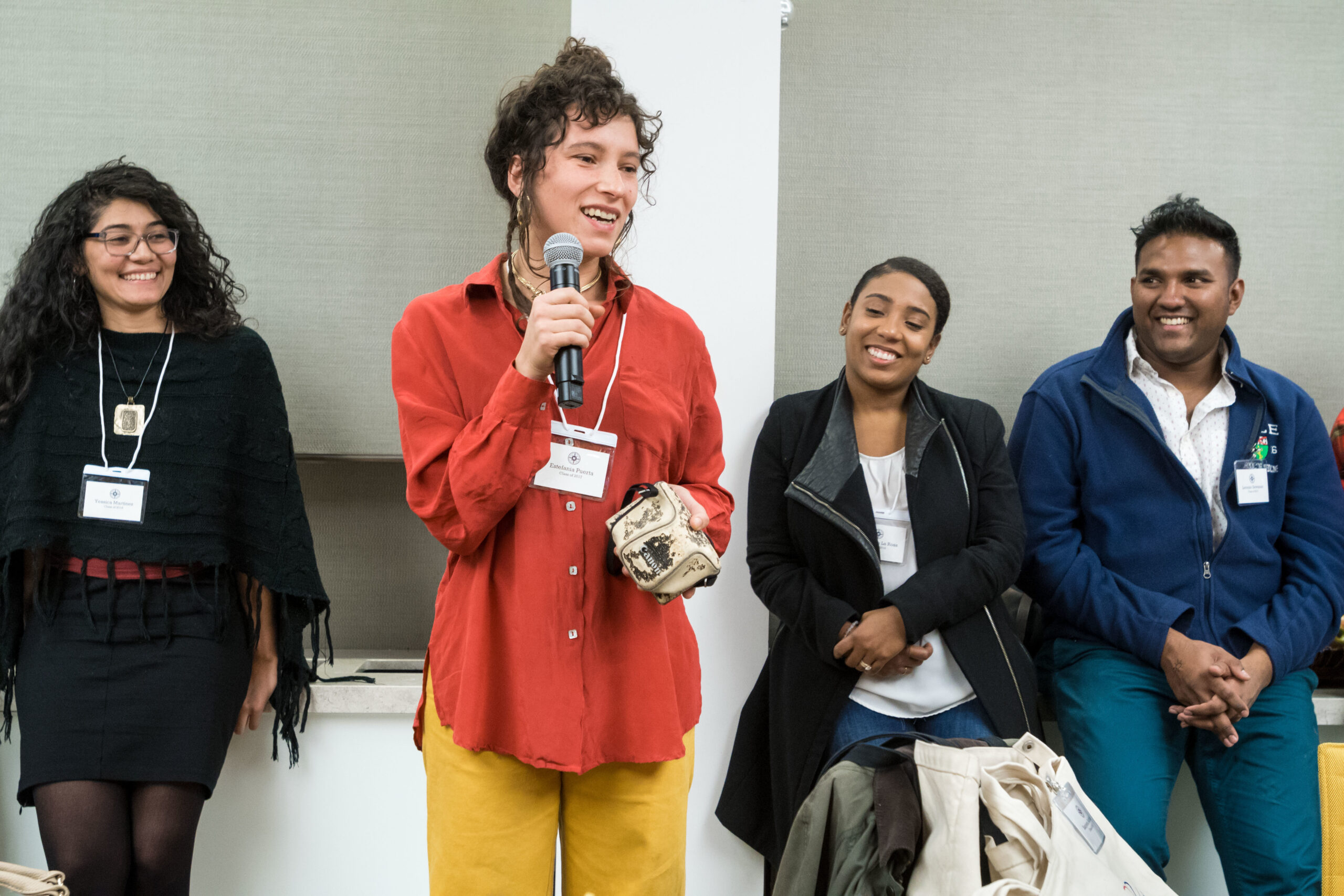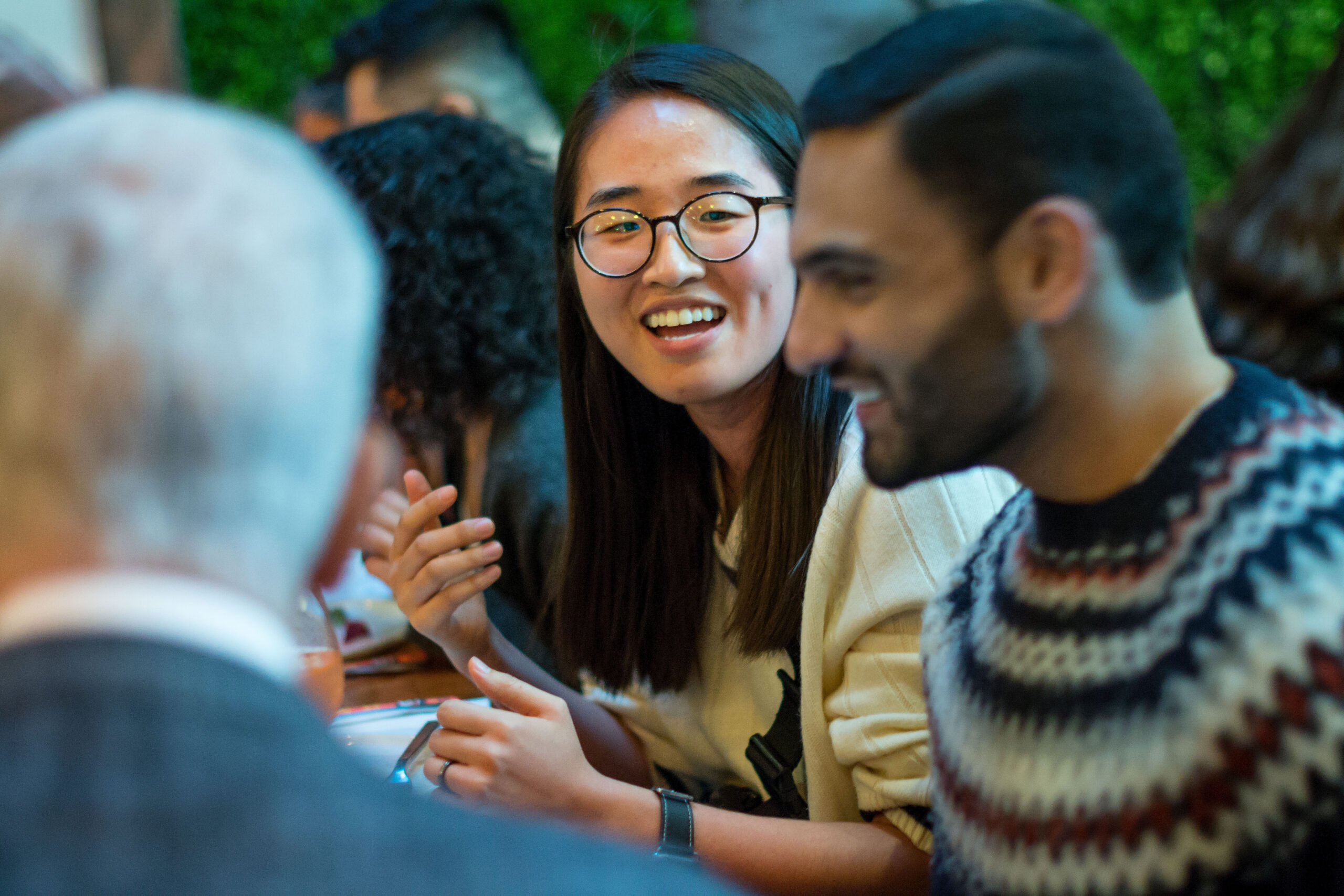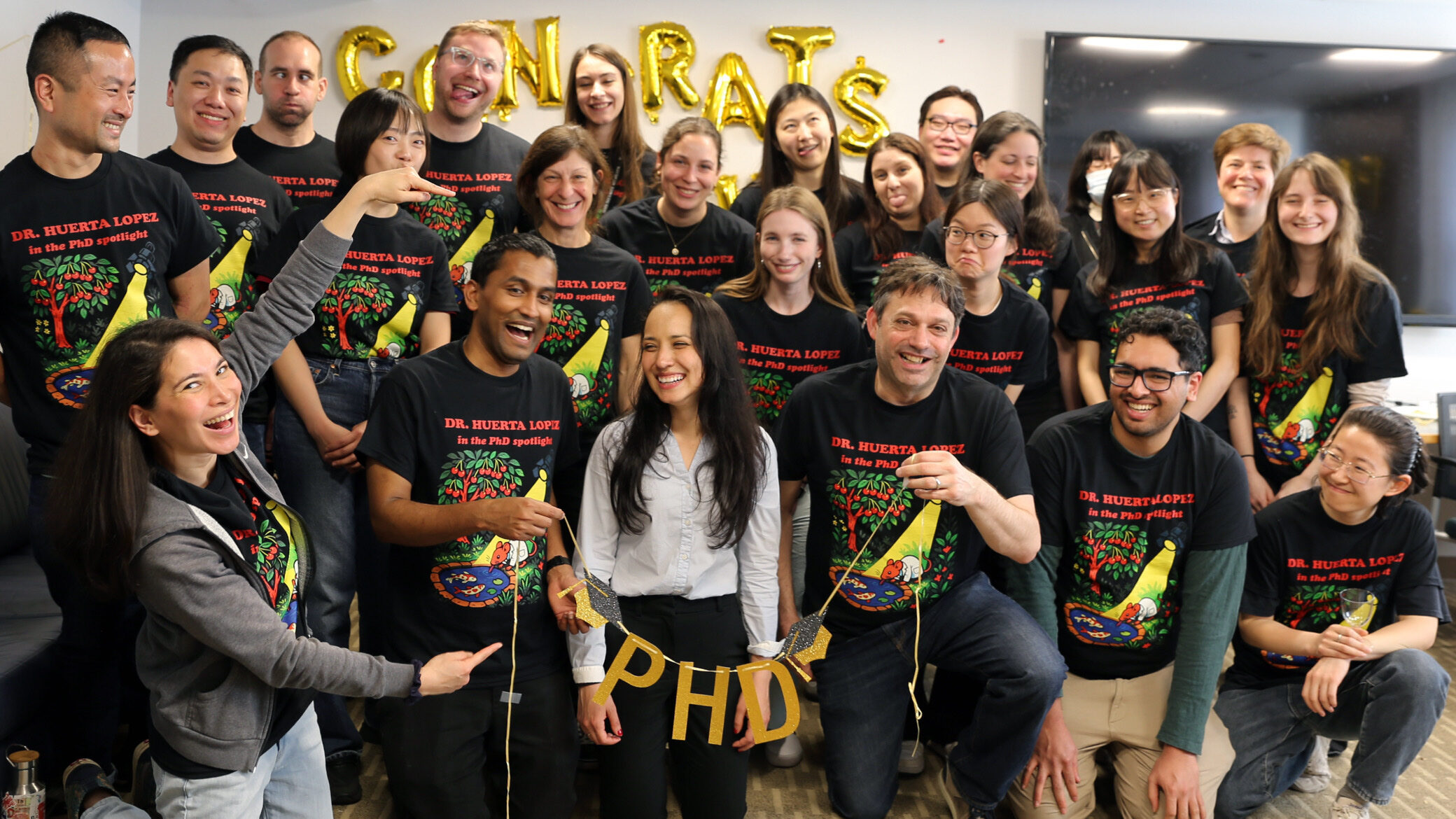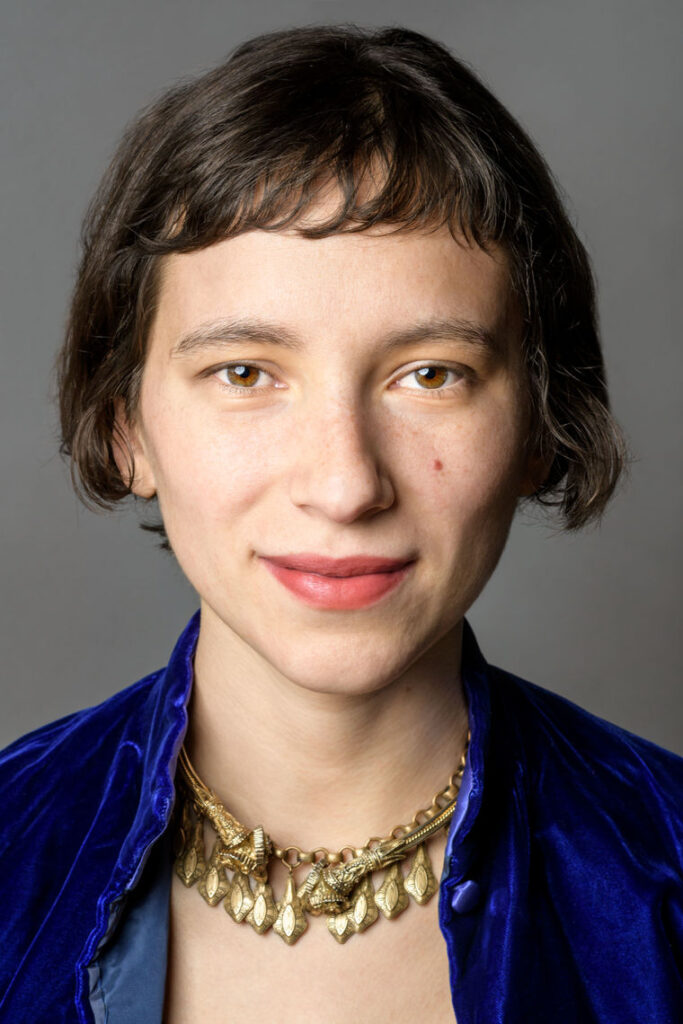- Fellow Highlights
Q&A: MFA Graduate Estefania Puerta Looks Back At The Fellowship

The Paul & Daisy Soros Fellowships for New Americans provides two years of funding for outstanding graduate students who are immigrants and children of immigrants. After two years the Fellows join a lifelong community of past Fellows. We asked Estefania (Este) Puerta, a 2017 Paul & Daisy Soros Fellow, to look back at the first two years of the Fellowship and what they have meant to her.
Este was born in Colombia and immigrated with her mother to Boston at the age of two. Este’s father had come to the US the year before. Finally reunited, Este’s parents set out to work hard and pursue a future in which she could be the first in the family to graduate from college and have a better life. Este went on to receive a degree in community and international development at the University of Vermont. The Fellowship supported her MFA in painting and printmaking at the Yale University School of Art.
Why did you apply to The Paul & Daisy Soros Fellowships for New Americans?
I applied to the Paul & Daisy Soros Fellowship to help with my MFA in paint and printmaking at Yale School of Art. I was hesitant to go back to school mainly for financial reasons and felt like pursing an art degree was even more risky, yet I decided to take the risk and pursue what I wanted to do with my life. The Paul and Daisy Soros Fellowship was the biggest game-changer ever for me and in my chosen career. Not only was I able to focus on my work without the anxiety of how I would pay it all back, but I also met amazing people who also benefited from the Paul & Daisy Soros Fellowship—all with their own heartening story to tell about how they got where they were. Having the financial support as an MFA student meant that I was able to buy materials that otherwise I would not have bought and experiment with new media that changed my practice and advanced my approach to making work. I also felt like I had this wider support network from students all over the country that were in different programs but could sympathize with stress, insecurity, cultural differences, and truly be there for one another. The staff at the Fellowship program were also amazing in their support and outreach. Having consistent communication with them and knowing they were another resource in big and small ways was so amazing!
Who has inspired you from the Paul & Daisy Soros Fellowship community?
Every single PD Soros Fellow I met and got to exchange even a few words with inspired me. I think that is what makes the Paul and Daisy Soros Fellowship so amazing; they create an environment and cultivate a community of people that are so inspiring and incredibly generous with their stories, ideas, and desire to connect. Of course, it was especially exciting for me to connect with other visual artists in the program and have a bit of unique solidarity there but honestly, it was even more exciting to connect with people I probably would never have gotten the chance to meet due to the difference in our fields. I was able to find this really special common ground and realize that what we all have in common is that we are all visionaries deeply committed to making an impact in society—we all have these immigration stories that weave a beautiful thread between us. In some ways, are all trying to make sense of those stories in this place we call home, and yet, feel complicated about calling home.
As a New American, why has it been important to have The Paul & Daisy Soros Fellowships community?
Even in my MFA program at Yale School of Art, which had different demographics of people, it was sometimes too hard to discuss our stories and hardships around our identity. While we did discuss it in relation to our field, we were also in a high-pressure situation that pushed us into our studios to work more than process. The Paul & Daisy Soros community gave me the space to process with other people and totally widen my scope in terms of how people are experiencing higher education and ways in which their identity may or may not play a role in their experience. More than anything, I find myself reflecting on some truly powerful conversations I had with different PD Soros Fellows, particularly during our retreats, where we could feel like the world of possibility was opening to us in a huge way; it wasn’t because of the prestigious programs we were all coming from but because it was the first time we got together as experts from different fields and asked questions that we’ve never heard asked, and exchanged ideas and stories that carved a new space of inquiry. This community has really reinforced my belief that working with people from different disciplines is essential to making for a more interesting and just society and that intersections of ideas can be where a lot of amazing work begins. I think that as a New American this community and these specific types of exchange have been so important and life changing for me because as immigrants, we don’t usually get the chance to dream outside the box. We feel immense pressure to fulfill a life that our previous generation set out for us and there is a lot of shame and guilt in pursuing risky, different, and new paths that do not have a defined successful outcome—but I felt that possibility of radical imagining and collaboration really emerge out of my time with the other PD Soros Fellows.
What advice would you give to someone who is thinking of applying to The Paul & Daisy Soros Fellowships for New Americans?
I would say that vulnerability and openness is the best approach to being part of this community. This is not your typical fellowship in the sense that what is most valued is not your GPA or CV but your human experience and how you see yourself fostering an environment where that experience uplifts yourself and others. No matter how prestigious your education is, what we focus on in our time as PD Soros Fellows is how we can come together and make for a more representative society that celebrates the many ways in which we thrive in the United States and make it a more just and inclusive place. That is nothing that can ever be fully outlined in a Q&A section, it is what comes from your heart and from your own excavation of yourself that brings that vulnerability to the table where everyone else is also sorting it out for themselves. In a time in your professional life where educational institutions may harden you, the Paul & Daisy Soros Fellowship program was a softening experience that really strikes at the core of why it is so important to remain soft and permeable to the world and people around us.
What does The Paul & Daisy Soros Fellowships for New Americans program mean to you?
This program introduced me to some of the most amazing people I’ve ever met. Just thinking about all the folks that I’ve met during the retreats brings a lot of emotions. It is intense to bring together a group of New Americans whose immigration stories are each so important and so moving. It really solidified my belief that immigrants are what makes this country a great country, it is the many stories, the common humanity in love and resiliency that makes me proud to live in a place where I can look around and see all the complexities of human experience. I value the PD Soros Fellows of this program tremendously and feel a bit better being in a world where I know there are Paul & Daisy Soros Fellows doing amazing loving things across the board. ∎
Keep Exploring
-
 Read more: Kathy Ku Steps into Leadership as PDSFA Chair
Read more: Kathy Ku Steps into Leadership as PDSFA Chair- Board of Directors
- Fellowship News
Kathy Ku Steps into Leadership as PDSFA Chair
-
 Read more: Q&A with MD/PhD Student Silvia Huerta Lopez
Read more: Q&A with MD/PhD Student Silvia Huerta LopezQ&A with MD/PhD Student Silvia Huerta Lopez
-
 Read more: PD Soros Eligibility Guide for PhD Applicants
Read more: PD Soros Eligibility Guide for PhD Applicants- Applicant Information
PD Soros Eligibility Guide for PhD Applicants
-
 Read more: Watch: Optional Exhibits & Recommendations
Read more: Watch: Optional Exhibits & Recommendations- 2025 Information Sessions
Watch: Optional Exhibits & Recommendations
